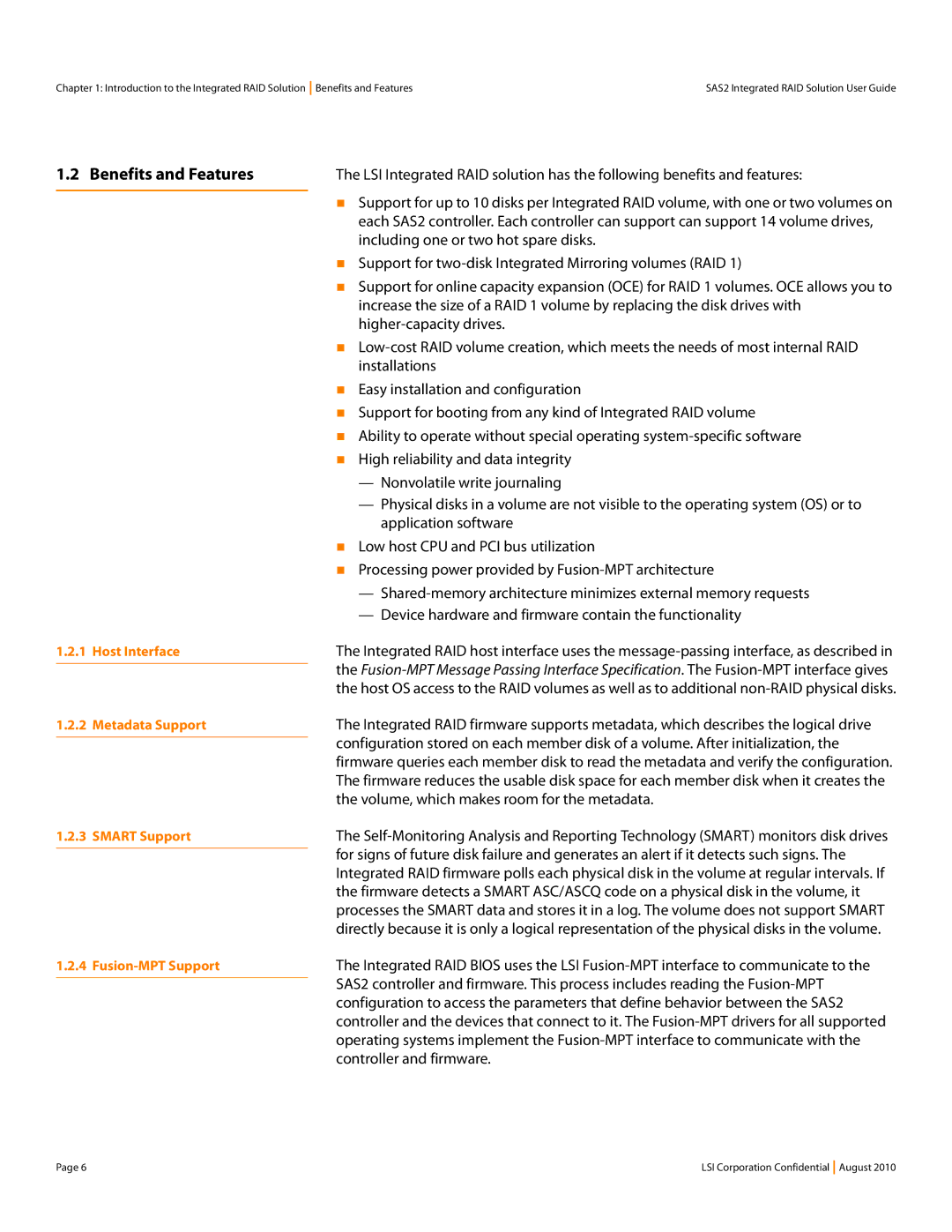
Chapter 1: Introduction to the Integrated RAID Solution Benefits and Features | SAS2 Integrated RAID Solution User Guide |
1.2 Benefits and Features | The LSI Integrated RAID solution has the following benefits and features: |
| Support for up to 10 disks per Integrated RAID volume, with one or two volumes on |
| each SAS2 controller. Each controller can support can support 14 volume drives, |
| including one or two hot spare disks. |
| Support for |
| Support for online capacity expansion (OCE) for RAID 1 volumes. OCE allows you to |
| increase the size of a RAID 1 volume by replacing the disk drives with |
| |
| |
| installations |
| Easy installation and configuration |
| Support for booting from any kind of Integrated RAID volume |
| Ability to operate without special operating |
| High reliability and data integrity |
| — Nonvolatile write journaling |
1.2.1Host Interface
1.2.2Metadata Support
1.2.3 SMART Support
1.2.4
—Physical disks in a volume are not visible to the operating system (OS) or to application software
Low host CPU and PCI bus utilization
Processing power provided by
—
—Device hardware and firmware contain the functionality
The Integrated RAID host interface uses the
The Integrated RAID firmware supports metadata, which describes the logical drive configuration stored on each member disk of a volume. After initialization, the firmware queries each member disk to read the metadata and verify the configuration. The firmware reduces the usable disk space for each member disk when it creates the the volume, which makes room for the metadata.
The
The Integrated RAID BIOS uses the LSI
Page 6 | LSI Corporation Confidential August 2010 |
